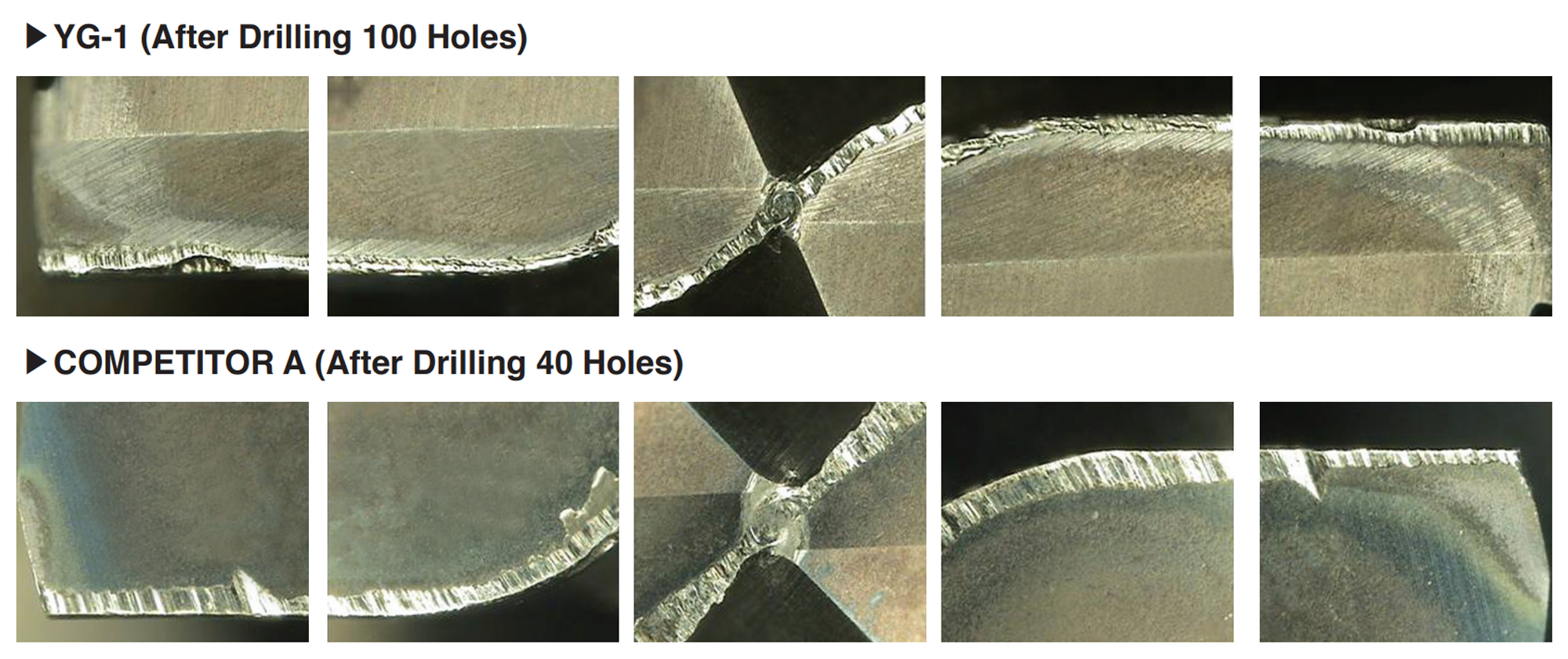Don't have an account?
Creating an account has many benefits: check out faster, keep more than one address, track orders and more.
Or
Checkout as a Guest
Place your order without creating an account for extra convenience.
Hardened steel is a broad term used for any type of steel which has been heat treated to offer additional wear resistance, hardness and durability over standard carbon, alloyed and soft steels. As a result, an engineer cannot approach a job involving hardened steel in the same way as standard soft-to-medium hardness steels. Special tooling and machining set-ups will be required to prevent tool breakage or scrapped jobs, which can cost valuable time and money.


How do we define hardened steels?
Before looking at the type of drill required to tackle hardened steels, we must first define what hardened steels are. A common way to do this is through the Rockwell hardness scale, which indicates different hardness levels and is a good way to assess the type of tooling required to tackle a specific material. EN3A, for instance, is a very soft steel which is around 175 Brinell (approx 9HRc), meaning any HSS or carbide drill would be able to penetrate this material with ease.
Typically, soft or medium steels are classified as any steel up to 30HRc, with pre-hardened steels up to 45HRc. Any steel type above this would fall into the hardened steel category. In Brinell Hardness, this would be above 419HB. Although hardened steels don’t have a limit in the hardness levels it can go up to, different types of hardened steel may require its own tooling (e.g. a 50HRc hardened steel may need different tooling to a 75HRc hardened steel). Therefore, hardened steels are not themselves a singular material type but a broad term to encompass a variety of materials with their own properties and tooling requirements.


What types of tooling are required for machining hardened steels?
Depending on the type of article you read, many different types of tooling can be recommended for hardened steels. For instance, it may be suggested that high speed steel (HSS) tooling with a cobalt substrate can be used to machine hardened steels, which is not recommended for materials above 45HRc. Even with a reinforced cobalt cutting edge, HSS tooling does not have the hardness or strength to effectively cut through hardened steels. Although HSS is tough, cutting through high hardness steels will cause the tool to either chip or break during the machining process.
In all circumstances, carbide tooling should always be first choice for hardened steel machining. Carbide has hardness and wear resistance properties which can effectively deal with the properties and problems hardness steels offer. Even then, not all carbide tooling will be able to machine hardened steels.
A quick way to ascertain the suitability of a carbide drill for hardened steels is whether cutting data is available for the chosen drill which covers hardened steels. If it doesn’t, it is likely the manufacturer did not intend for that drill to be used with hardened steels. Because of the unique properties of hardened steels, manufacturers will usually have specific fine carbide ranges for dealing with these materials. It is highly recommended, especially at high hardened levels, that these types of tools are used.
What drill should I use for machining hardened steels?
At Cutwel, we supply an array of tooling for machining hardened steels from 45HRc right up to circa. 70HRc. As part of our popular Dream Drill range from market leading supplier YG-1, we have a specific range of carbide drills designed for high hardened steels.
This range is designed for high hardened steels, including quenched steels and tempered steels, up to 70HRc. It features a low 15° helix angle to maximise rigidity, which is especially important in hard steel drilling. Furthermore, cutting loads are minimized through a special flute thinning geometry, reducing pressure on the tool and preventing tool breakage or chipping during machining applications. Together, this means the Dream Drill Hardened Steel range gives exceptional performance in exceptionally tough conditions.
As with all carbide Dream Drills from YG-1, the drill also features a self-centring geometry with 140° drill point. When a drill is self-centring, no spot or centre drilling operations are required. Machining operation times can therefore be slashed, whilst downtime can be kept to a minimum. To engineers, this means more jobs can be processed in the same period of time, and more revenue can be generated.


Need any help machining hardened steels?
We understand that hardened steels can be a tricky material to machine, which could quickly become an expensive and time-consuming process if the correct tooling and machining set-up is used…
Cutwel is on-hand to produce market leading technical support on all its products, which can help:
- Improve productivity.
- Reduce downtime.
- Advise on comprehensive tooling solutions and packages, including workholding and tool holding equipment.
Get in touch today on 01924 869615, email sales@cutwel.net or browse our full range of tooling at www.cutwel.co.uk.